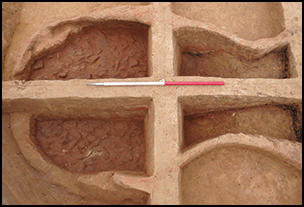Article contents
A well-preserved Michelsberg Culture domed oven from Kortrijk, Belgium
Published online by Cambridge University Press: 11 February 2019
Abstract

In 2015, a domed oven from the late fifth millennium cal BC was excavated near Kortrijk, northern Belgium. In terms of its size, tripartite structure, stone flooring and well-preserved domed combustion chamber, the oven is unique in Neolithic Western Europe, although mostly smaller, less well-preserved parallels are known in northern France. Such features are thought to have appeared in Western Europe in the Early to Middle Neolithic periods (post-Linearbandkeramik Culture). Their appearance and possible use for drying cereals may be related to a change from individual (household) to communal processing of cereals, and/or indicate adaptation to a wetter climate by newly settled agro-pastoralist communities.
- Type
- Research
- Information
- Copyright
- Copyright © Antiquity Publications Ltd, 2019
References
- 3
- Cited by


